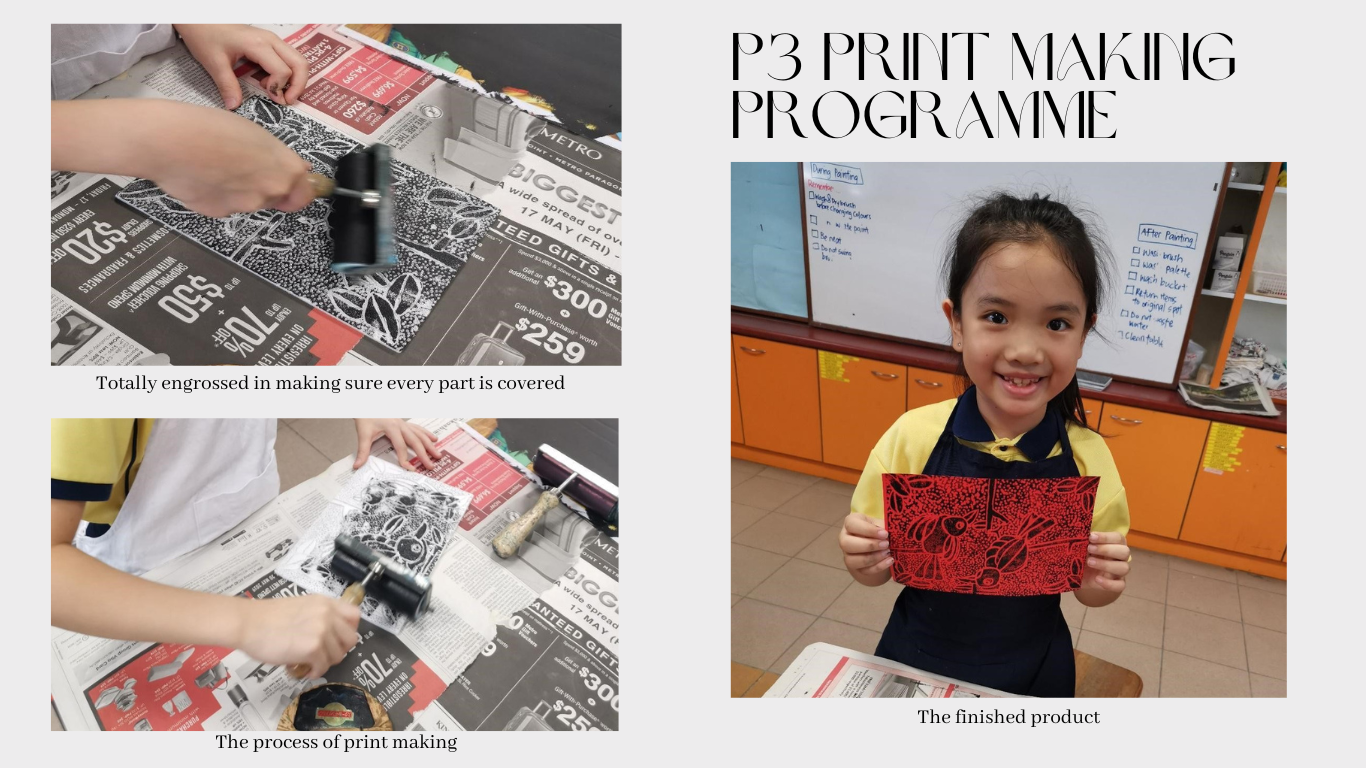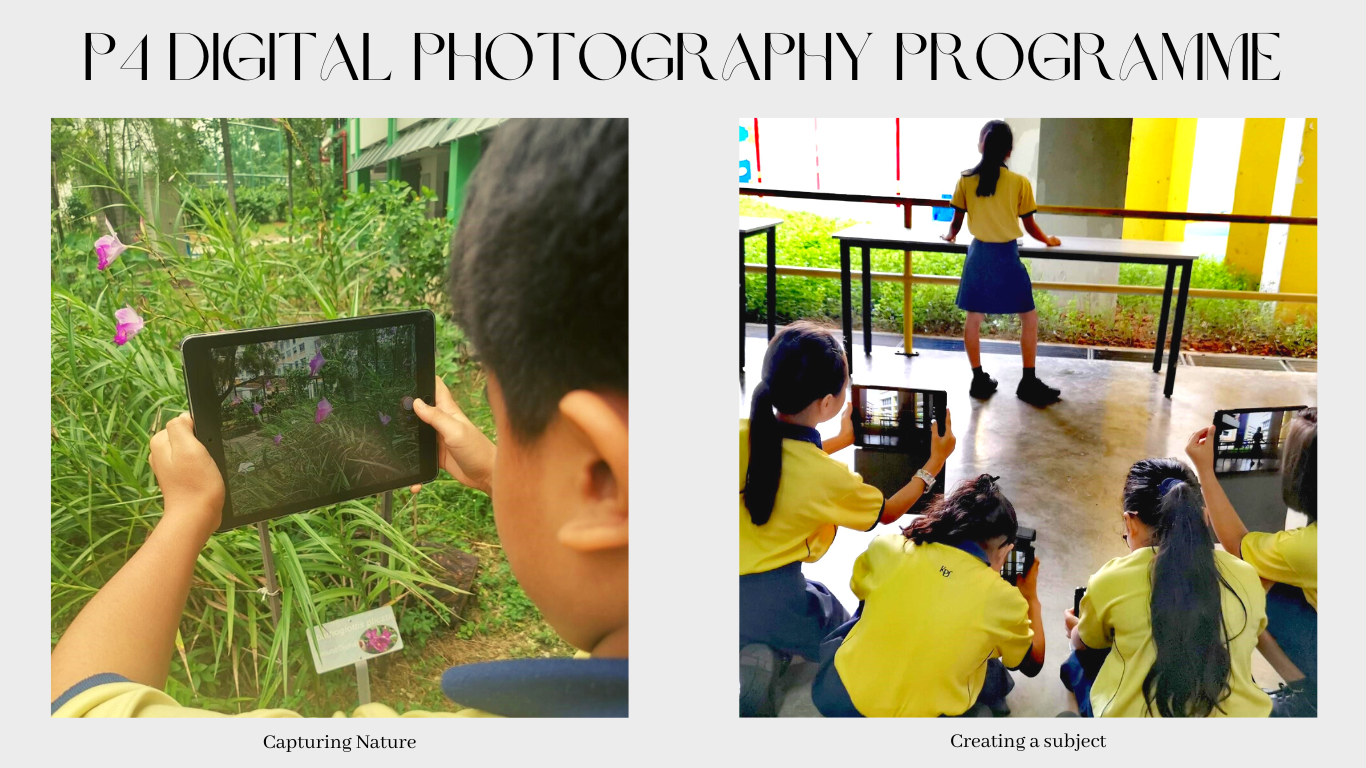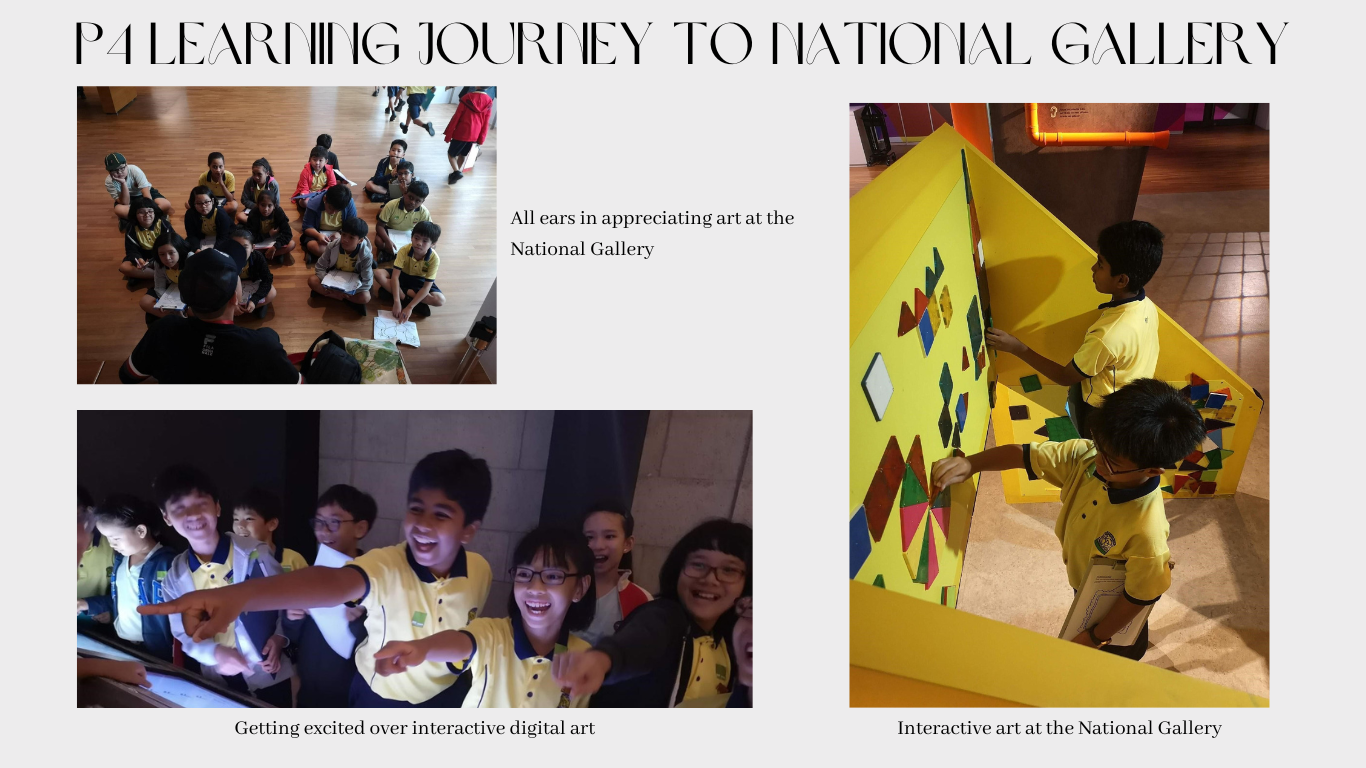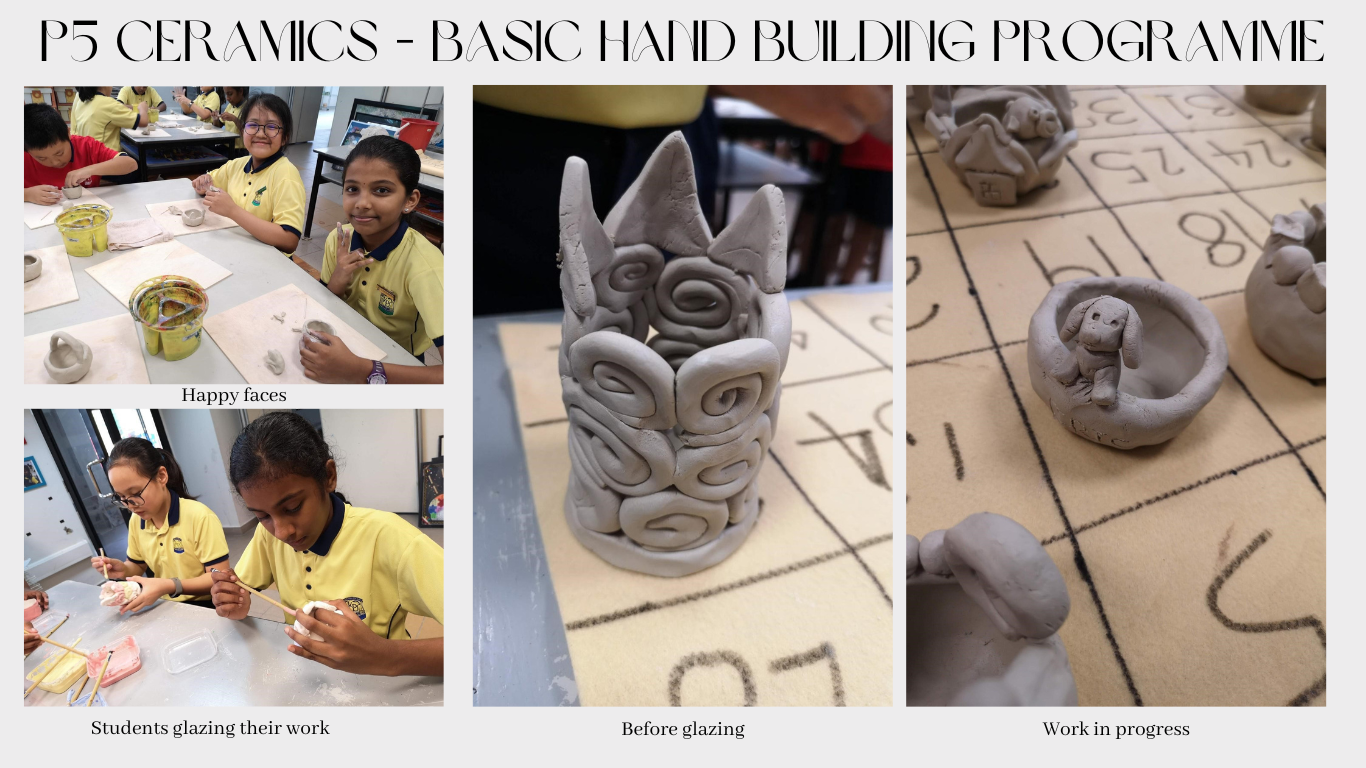Arts
Art Curriculum Framework
Recognising students as key agents of learning, the objectives of the primary art syllabus are to develop all students as active artists and informed audience with
- visual inquiry skills to discover and explore their surroundings;
- curiosity, imagination and enjoyment in art making and art discussion;
- confidence in working individually and in groups to focus ideas and create artwork; and
- awareness of and respect for histories and cultures of key artworks and artist in Singapore and the world.
The objectives of the syllabus are achieved through the Primary Art Syllabus Framework below that encapsulates the key features of the syllabus.

The syllabus framework presented in the form of a colour wheel illustrates the dynamic relationships amongst the various key features of the art syllabus as an integrated concept for the learning of art to be holistic and enduring. It serves as a compass to navigate the desired direction for cohesive and effective teaching and learning of art.
- The three Big Ideas at the heart of the syllabus framework form the enduring understandings that provide focus for the teaching and learning of art.
- The big ideas frame the three Learning Domains of see, express and appreciate present learning opportunities for students to develop the Key Competencies of observe-inquire, create-innovate, and connect-respond.
- Students learn to see, express and appreciate through the four key components of the Learning Content - context, artistic processes, media and visual qualities.
- In the process, students acquire knowledge, skills and values that equip them to be active artists and informed audiences.
Department Pedagogy
The Art Programme in Kranji Primary School is a key component in nurturing the whole child which includes the acquisition of 21st century competencies. Through Art, we hope to develop Kranjians who are confident and concerned citizens, taking ownership for their learning and contributing actively to society. This ties in closely with our school values.
All art lessons are taught by trained art teachers who have gone through regular upgrading in art pedagogy and teaching strategies in order to deliver quality visual arts education to our students.
Engaging Art Learners through Art Making and Art Discussion
In art making, students engage in artistic processes to create artworks that communicate their ideas. Students investigate subject matter such as people, places and spaces in authentic contexts; and explore and experiment with various ways of using visual qualities in a range of art forms to express their ideas. Through art making, students learn how artworks act as representations; appreciate what artists do and what their own and others’ artworks mean to them.
In art discussion, students are actively involved in looking at and talking about art that develops their thinking skills such as observing, recalling, analysing, applying, comparing, questioning and making choices. Through art discussion, students learn to form and verbalise their ideas using appropriate art vocabulary. They become sensitive and discerning viewers of artworks and also learn to make connections through stories of artworks to the world of art and their everyday life.
Inquiry-based Learning in the Art Classroom
In line with the emphases of the syllabus, inquiry-based learning is used as the main instructional strategy to foster curiosity and creativity and encourage students to direct their own learning. According to students’ background, maturity, prior knowledge, experiences and interest in the chosen topic, different levels of inquiry (Structured Inquiry, Guided Inquiry or Open Inquiry) are applied in the Three Domains of Seeing, Expressing and Appreciating.
Positive Classroom Culture
Supporting the above is a conducive art learning environment and positive classroom culture that sparks the joy of learning, ignites sensory excitement, piques students’ interests and curiosity and offers choices and opportunities for students to interact with one another and express their ideas.
4E Approach
The 4E Approach guides the art department in the delivery of the art curriculum:
-
Experimentation: Broad-based Learning of Art during Art lessons.
-
Exploration: Exploration of different art genres, including Printmaking, Digital Photography, Basic Ceramic Handbuilding and Digital Manga. The inclusion of digital media is also in line with MOE Art Unit’s curriculum shift towards New Media. Professional Artist are tapped on to impart their professional knowledge in different art genres and to complement the expertise of the art teachers.
-
Exposure: Opportunities for students to be exposed to artworks by master artists through a Learning Journey to National Gallery at Primary 4 and to practising artists through school Assembly Programmes.
-
Expression: Opportunities for students to showcase their talents at various platforms such as our Annual Art Exhibition and Doodle Wall in the canteen.
Level Programmes





 Please click here to find out more about students’ art works.
Please click here to find out more about students’ art works.

